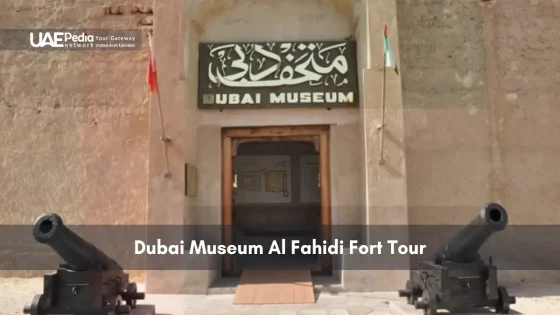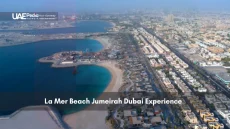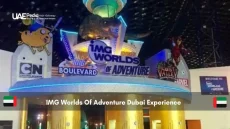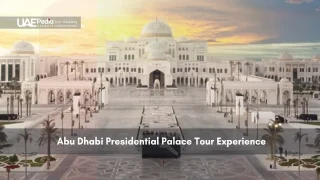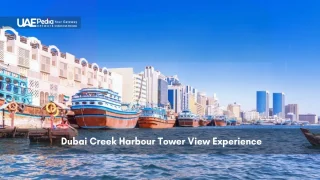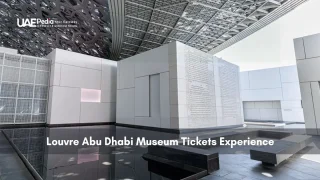What if we told you one of the United Arab Emirates’ most iconic cultural landmarks began as a desert defense post in 1787? The thick-walled structure now known as Dubai Museum breathes life into the city’s past, standing as its oldest surviving treasure. Step inside, and you’ll swap skyscrapers for wind towers, trading modern glamour for pearl-diving dioramas and Bedouin artifacts.
This isn’t just a museum—it’s a time capsule. When the fort became a heritage hub in 1971, it preserved traditions from fishing villages and spice markets that thrived long before oil reshaped the region. Clay houses and traditional boats (dhows) share space with interactive exhibits, creating a bridge between generations.
We’ll walk you through hidden corners of this historical gem, from its original coral-stone walls to rooftop views that contrast old and new Dubai. Whether you’re a history buff or a first-time visitor, expect insider tips alongside stories of resilience and innovation.
Key takeaways:
- The 235-year-old fort reveals Dubai’s pre-oil era through immersive displays
- Cultural artifacts showcase Emirati life, trade, and survival in harsh desert climates
- Practical advice helps visitors maximize their experience at this central landmark
A Glimpse into Dubai’s Rich Heritage
Centuries before skyscrapers, this structure stood as a silent sentinel over a budding trading post. Its coral walls once housed soldiers, prisoners, and even royal strategists—a chameleon of purpose adapting to the needs of a growing community.
Historical Origins of Al Fahidi Fort
Built in 1787 from coral-stone and gypsum, the fort’s thick walls tell tales of protection and power. Originally a military garrison, it later became a prison and the ruler’s administrative nerve center. Every tower and courtyard whispers stories of strategic decisions that shaped the region’s future.
By the 19th century, the fort guarded trade routes linking Arabia to Africa and Asia. Its dual role as defense stronghold and governance hub reveals how early leaders balanced security with commerce—a blueprint still visible in the city’s DNA.
Cultural Significance and Pre-Oil Era Life
Step into the lower galleries, and you’ll find treasures from a time when pearl diving and spice trading fueled daily life. Clay pots from Mesopotamia share space with African coins, while life-size dioramas recreate bustling markets where merchants haggled over textiles and dates.
One display shows a family gathering in a barasti (palm-frond) home, their laughter almost audible. Another captures fishermen mending nets under the blazing sun. These scenes aren’t just history—they’re living threads connecting past resilience to modern Emirati identity.
The collection’s crown jewel? A replica souq where you can almost smell cardamom and hear craftsmen shaping copper. It’s proof that even before oil wealth, innovation thrived in the desert’s embrace.
Experiencing Exhibits at dubai museum al fahidi fort
Step into the shadows of ancient walls, and suddenly the desert wind carries voices from centuries past. This cultural site transforms history into a multisensory journey—where creaking dhows and clinking copper tools pull you deeper into bygone eras. Every corner whispers tales of resilience through carefully curated galleries that honor tradition while embracing modern storytelling.
Immersive Life-Size Dioramas and Artifacts
Feel the energy of a 19th-century marketplace as you wander past vendors haggling over spices. Life-sized scenes show pearl divers securing ropes around their waists while potters shape clay under palm-frond shelters. You’ll catch yourself glancing over your shoulder, half-expecting a merchant to offer dates from his woven basket.
Artifacts like weathered fishing nets and pearl-measuring scales anchor these displays. One courtyard recreation even includes the salty tang of sea air—a clever touch that makes history feel breathlessly real.
Interactive Displays and Multimedia Presentations
Touchscreens let you “virtually” sift through archaeological finds, while a timeline projection morphs sand dunes into skyscrapers.
“We wanted visitors to not just see history, but to dialogue with it,”
| Feature | Traditional Exhibits | Modern Enhancements |
|---|---|---|
| Storytelling | Handcrafted dioramas | Augmented reality overlays |
| Engagement | Physical artifact displays | Touchscreen explorations |
| Sensory Impact | Authentic material textures | Ambient soundscapes |
Don’t rush through the tower exhibits—their spiral staircases frame intimate displays of ceremonial daggers and musical instruments. For deeper insights, plan your visit during morning hours when crowds thin, letting the site’s stories unfold at your own pace.
Navigating Dubai Museum: Tips for Visitors
Ready to explore without the hassle? Let’s map your adventure. The cultural site sits just 300 steps from Al Fahidi Metro Station’s exit 4—follow the heritage district signs. Prefer buses? Routes 33 and 53 stop at Al Ghubaiba station, a 7-minute walk away. Pro tip: Download the RTA Dubai app for real-time transit updates.
Metro Magic and Gallery Navigation
Arrive before 10 AM to beat both heat and crowds. Start downstairs where air-conditioning keeps artifacts (and visitors) cool. The pearl diving exhibit near the entrance always draws families—swing by early for photos without photo-bombers.
Curated Paths and Hidden Gems
Check the official website’s “Plan Your Visit” page for seasonal tour schedules. Guides often share stories about rare finds—like 1930s trade ledgers—in the maritime history area. Don’t miss the courtyard’s shaded seating spots, perfect for rehydrating while kids examine traditional fishing traps.
Weekday afternoons offer quieter exploring. Use touchscreen kiosks in the pre-oil era gallery to virtually “trade” spices—it’s a hit with all ages. As one staff member told us: “The best discoveries happen when you linger near less crowded displays.”
Final Reflections on Your Dubai Museum Al Fahidi Fort Tour
As the sun dips below wind towers, you’ll realize this isn’t just another cultural pit stop—it’s a conversation across centuries. The spiral ramp leading through exhibits becomes a metaphor itself, gently winding visitors through eras where desert ingenuity shaped a global hub.
Modern touchscreens and aromatic souq recreations make heritage tangible. Yet the true magic lies in contrasts: ancient coral walls framing 21st-century skyline views, or the way traditional fishing nets hang beside augmented reality displays. Every corner whispers, “This is how we thrived.”
That 235-year-old structure? More than a building—it’s Dubai’s origin story etched in stone. Visitors often pause in the courtyard, struck by how one day here reshapes their understanding of Emirati resilience. The curated displays don’t just teach history; they let you trace calloused hands that built futures from sand.
Return visits reveal new layers, like spotting African trade influences in pottery designs or catching golden-hour light through the spiral’s stonework. Consider this your invitation: wander deeper, question louder, and let the desert’s timeless lessons linger long after you exit those historic gates.
Most visitors spend 1–2 hours exploring the exhibits. The compact layout lets you absorb Emirati history without rushing—perfect for squeezing into a morning before hitting the souks!
While self-guided exploration is standard, check the museum’s website for occasional cultural talks or heritage walks. Audio guides aren’t offered, but info plaques in Arabic and English provide context.
Yes! Snap away in most galleries (flash-free, please). The courtyard’s wind towers and cannon displays make iconic backdrops—just respect “no photo” signs near delicate artifacts.
Hop on the Green Line Metro to Al Fahidi Station—it’s a 7-minute walk through the historic quarter. Alternatively, buses 33, 53, or C07 stop nearby. Abras (water taxis) from Deira drop you at Bur Dubai’s creek side, a 10-minute stroll away.
Absolutely! Life-sized market scenes and pearl-diving setups captivate little explorers. The underground gallery’s dim lighting adds adventure—though strollers might struggle in tight spaces.
A> You’ll find restrooms and a small gift shop selling heritage books, but no on-site café. Grab karak chai from vendors outside or head to the nearby Al Bastakiya cafes post-tour.
